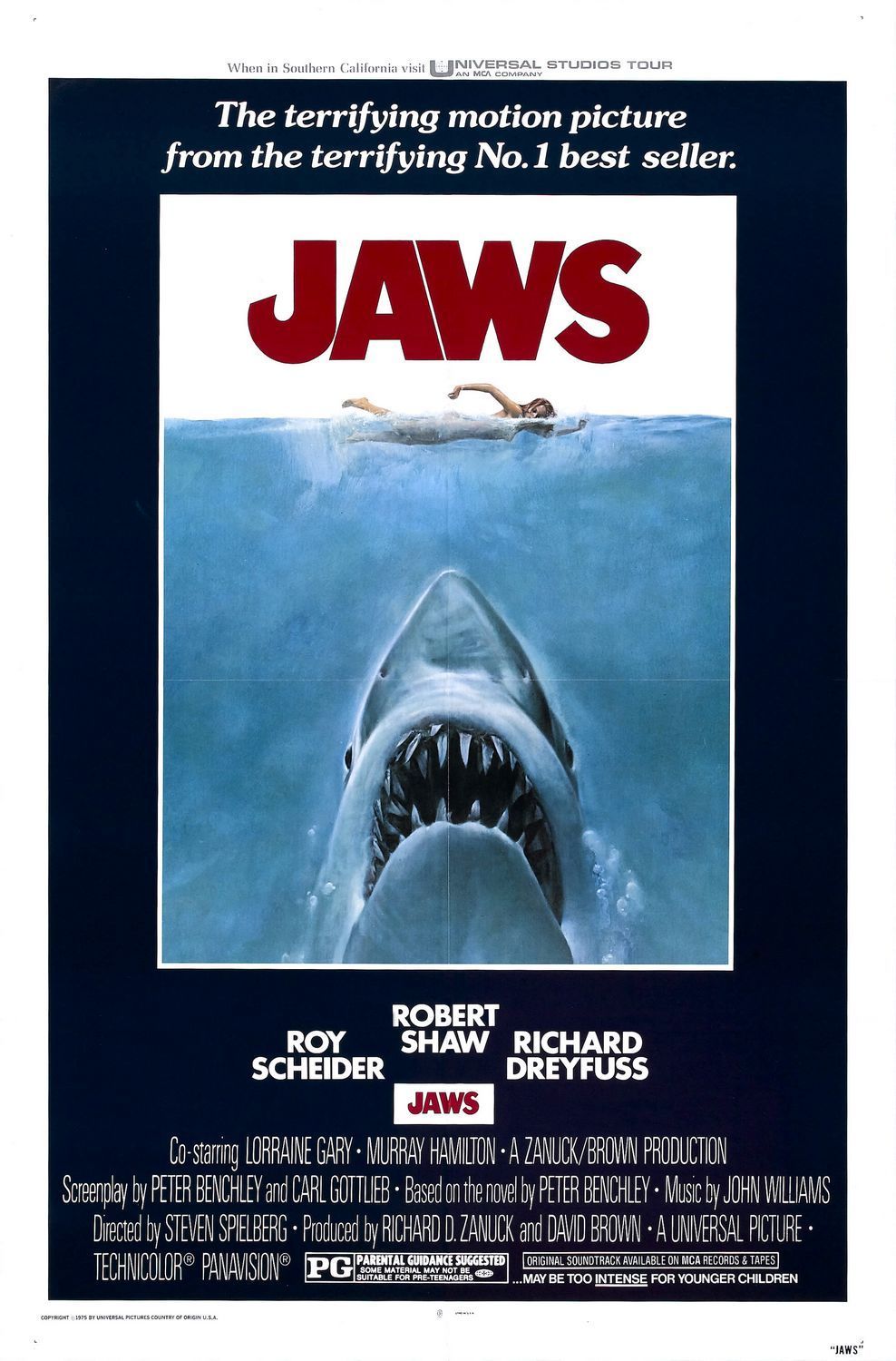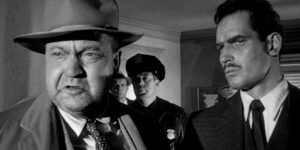For His Iconic Death Scene in ‘Speed,’ Jeff Daniels Took Inspiration One of Steven Spielberg’s Greatest Movies

1994 was a great year for Jeff Daniels. Not only was he finally getting to show everyone just how funny he was as alongside Jim Carrey in Dumb and Dumber, but he also got to play the buddy cop partner to Keanu Reeves in Speed. In Dumb and Dumber, Daniels is the co-lead, but in Speed he has more of a supporting role because his character dies in an explosion from a bomb set off by the film’s villain, played by Dennis Hopper. The death of Daniels’ character, Harry Temple, took Speed from being a fun action movie to something more emotional, and part of that impact comes from how Harry responds just before the bomb goes off. It’s now regarded as one of Jeff Daniels’ finest acting scenes, but in reality, all he did was steal his facial expressions from Roy Scheider and how he reacted to seeing the shark in Jaws.
Jeff Daniels’ Death Scene Is the Most Heartbreaking Part of ‘Speed’
In Speed, Harry Temple is best friends with Jack Traven (Reeves) in LA’s SWAT team bomb squad. When bad guy Howard Payne (Hopper) puts a bomb on a bus that will explode if it drops below fifty miles per hour, it’s up to Jack and Annie Porter (Sanda Bullock) to stop that from happening, but while they’re on board a bus and trying not to die, Harry is out searching for the mad bomber. In a crucial second act scene, Harry and other SWAT members arrive at a house they think Payne is in, only to realize that it’s a trap. Harry’s not there, but he’s left a bomb in his place. When a red light on a wall thermostat beeps, Harry knows he’s a goner, and in those last moments his face falls ever so slightly in recognition. It’s a scene that works because Harry’s not screaming or trying to hopelessly run away. Instead, he accepts his fate in the final second of his life.
In a 2024 interview on The Rich Eisen Show, Jeff Daniels broke down his Speed death scene and the look on his face that he gives. Daniels didn’t know how his character should react in the moment, but then the solution came to him. Daniels said:
“I remembered an interview that Roy Scheider did for Jaws. And they asked Roy, ‘That moment, Roy, when you saw the shark, my God, I mean one of the great acting moments in cinematic history. How did you do it?’ And Roy said, ‘Well, I looked down and when I looked over at the shark I made sure my cheek muscles were a little up, and then I just dropped them.'”
Jeff Daniels decided to do the exact same thing in Speed, saying that it was as simple as looking at the thermostat before someone called out to take a break for lunch. He joked about how critics get emotional talking to him about it, as if it was a phenomenal acting performance, but while he mocks how the moment is treated a little bit, the subtlety and that quiet hopelessness is what makes it so tragic and gut-wrenching.
Roy Scheider’s Reaction Led to the Most Famous Moment in ‘Jaws’
The scene in Jaws that Jeff Daniels is speaking of is its most famous. It’s a third-act moment when Chief Brody (Scheider) is on The Orca with Quint (Robert Shaw) and Hooper (Richard Dreyfuss), shoveling chum into the ocean to try to draw the great white out. It leads to that iconic jump scare when the shark, with its terrifying mouth open wide, breaks the surface. Brody’s face falls before he slowly walks backwards and tells Quint, “You’re gonna need a bigger boat.”
A lesser film may have had Brody scream or faint to sell the fear of the shark, along with his already-established fear of the water, but instead Brody stays silent as his features fall ever so slightly. It’s a recognition that, oh, this shark is way bigger than I thought it was going to be, and while he might temporarily be in shock, he also accepts that fate just like Harry Temple did. It’s not Brody realizing that he’s about to die, but that this moment has just gotten deadly serious and is as real as possible. Still, he’s the Police Chief, a man of respected authority, so he knows he must stay calm.

Related
Spielberg’s biggest collaborator stayed behind on Amity Island.
Brody buries his anxieties and keeps cool for himself and everyone else around him. By lifting his cheek muscles then dropping them, he’s saying, okay, I see the shark, it’s real, this is happening, now it’s time to be logical and decide what to do next. Just a simple look tells you everything you need to know about his character. He’s the leader who will be logical while everyone is losing it around him. That simple but effective gaze holds up the movie. Jaws could have been over the top and silly, but because our lead character is grounded, the story stays grounded too. It feels real because our hero treats it as such. That’s why it also worked so well in Speed. We already have an over-the-top premise and villain in both movies. There was no need to have the heroes going overboard too.

- Release Date
-
June 18, 1975
- Runtime
-
124 minutes
- Writers
-
Peter Benchley, Carl Gottlieb, John Milius, Howard Sackler, Robert Shaw





